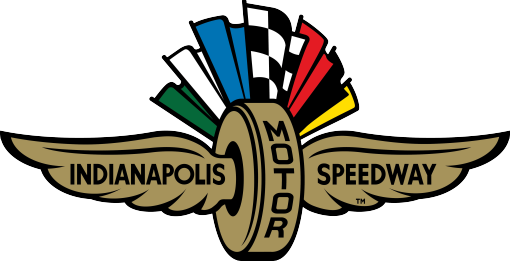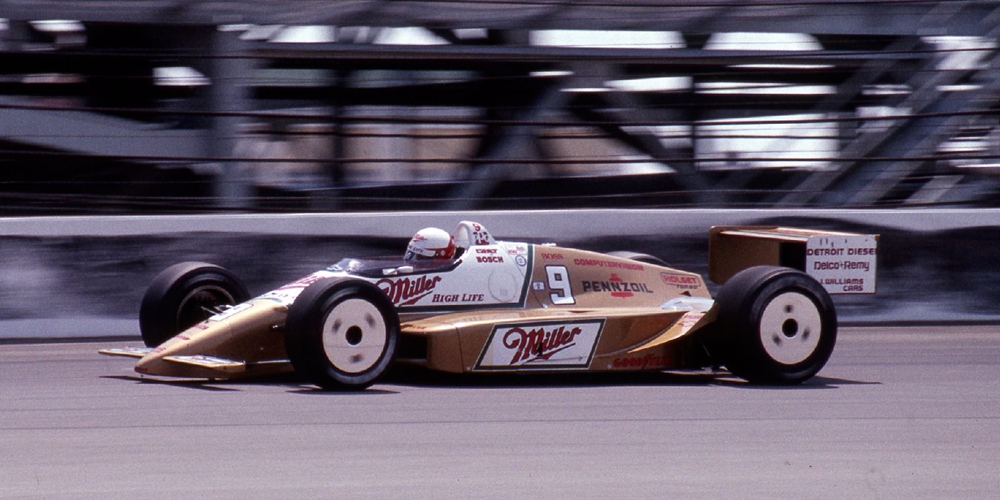Note: This continues a series of interviews with Indianapolis 500 legends about the favorite car they drove in “The Greatest Spectacle in Racing” and why, in their words. “My Favorite Car” interviews will appear at IMS.com on Mondays through the spring. Read other installments of "My Favorite Car" here.
Q: What was your favorite car you drove in the Indianapolis 500?
Danny Sullivan: The ’88 Penske 17. The one I won the championship with, and if you remember, I was leading the race (Indianapolis 500) by a substantial amount, and we had that front wing break. The mount put me into the wall. Even though I won with the ’85 car, which was a great car, don’t misunderstand me, the ’88 PC-17 was a better overall car. In fact, other than some incidents, I probably could have won all three 500-milers based on that. We had the accident in Pocono while Mario (Andretti) was leading, but I had made my last pit stop. He got tangled up with Dick Simon in (Turn) 3, and it ended up taking me out, as well. Mario still had to stop. I already had done my last one. I was not more than a second behind him.
Q: What made the PC-17 so special?
DS: It just had all of the ingredients. It had good balance. Aero-wise, it was quick. It had the Ilmor engine in it. It all worked, and it seemed to work just about every place we went. I won four races that year, should have won two more. But I think I had nine or 10 poles; I think my 10th pole was the Marlboro Challenge. It was just good everywhere. If you go compare it to the ’85 car, the March, the winner, you can’t turn down the winning car. But overall, that car (PC-17) was better. That was the year all three of us (Rick Mears, Sullivan, Al Unser) sat on the front row. So, it wasn’t just mine. That car was good across the board for all of us. Unfortunately, we had that wing mount. The adjuster that we had on the speedways, where we could come in and put a turn in, that’s what broke, the adjuster. It just sat down; the wing just collapsed. We didn’t run much wing, anyways. It probably didn’t move a half an inch. But you take away a half an inch of downforce, you’re gone right into the fence. It’s strange to pick a car that you end up crashing, but for me, that car was fabulous.
Q: Was that car fast right off the truck when May opened, or did you have to tweak it a lot?
DS: No, we knew the car was good. Like everything, and especially in those days, it was such a competitive field that that didn’t mean that we went away every day with the quickest times, but we knew that the car had a really good balance, and it was quick. When we wanted to go quick, we could go quick. I think that was proven in qualifying. In the race, at one stage I was a lap up on the field in the first 100 laps. You could go high in the car; you could go low in the car. Some cars are good and have good balance, but they’re a little tricky in traffic or they’re a little this or a little that. This car was just a joy to drive all year long. Again, that didn’t mean we were always dominant because the field was too competitive for you to ever have that. But some cars you go in, and you’re on a knife’s edge. If you get the balance right, you’re really good. But if you’re a little off right or left of that, you fall off in a big way. This car had a really big balance curve to it. You could dial it in just about anywhere you went.
Q: That was the first year you didn’t run the March chassis with Penske, correct?
DS: No. It was funny. Roger (Penske) brought it back, but we went for the PC-15 and 16 in ’86 and ’87, and those were the Alan Jenkins design. Nigel Bennett designed the 17. The first two (PC-15 and PC-16), they were just hard to drive. They were just not nice cars. They weren’t bad cars; they just weren’t good cars. They were just a little off. They had that knife’s edge. So, that made it tough.
Q: Was Nigel Bennett’s PC-17 an evolution or a revolution from the Jenkins-designed cars?
DS: It was a completely new design. It was a complete ground-up car. Most designers are not going to take something from a different designer and put it into your car. There may have been something he looked at or an installation – you’d have to ask Nigel about that – but overall, he just got it right. He made some good cars. Think about some of his runs. Penske sold one of those cars to Pat Patrick, and Emerson (Fittipaldi) won the championship and the “500” (in 1989). The March platform was a really good car for a while. The Reynard had a really good platform for a while. The Lola had a really good run when they were more of the dominant car. If anybody could answer what it was that any designer got right for a good car, they’d all be copying that formula. He (Bennett) just got it right. His cars after that were an evolution.
Q: How much did you share setups?
DS: To use Rick Mears as an example, he always liked my road course setups. I didn’t like his oval setups quite as much because he could drive them freer than I could drive them. They were close, but he liked my road course setups. We were open about it. I could look at his setup sheet. The engineers, all of us would get together after sessions. “What did you do?” “Well, we tried this change, and we didn’t really get much out of it.” Bear in mind, that all it takes is that he’s running, as an example, he might be running a different camber or caster or toe-in. So, the change you made, if you don’t have it spot-on and usually done by the same guy mechanic … Remember how they used to measure with the string gauges? You’re about something that’s 30-thou (thousandths of an inch) or 60-thou. You’re talking pretty small numbers. So, which side of the string gauge does the guy measure on? So, that’s why I’m saying you almost have to have the same guy (making changes to both cars). It’s like a chef: They throw in a little of this; they throw in a little of that. So the way the guy actually measures it and sets up the car could be a little bit different than the way the other chef is doing it on the other side. Let me tell you how finite these Indy cars are. One year, Chuck Sprague was my crew chief. We were running an eighth- or maybe a quarter-inch Gurney flap on the back wing. We were running fast, and I came in and I said, “I’ve got just a hair too much push, understeer.” I remember Chuck took a file and to the back wing and went down it one way and down the other way. And I went out, and the car was spot on. He knows how much pressure he puts on it (file). If another guy had done it, it could have been a little more or a little less. That’s just how finite that place (Indianapolis) is.
Facts about Danny Sullivan’s 1988 Indianapolis 500 car:
Car name: Miller High Life Penske/Chevrolet Indy
Car number: 9
Team: Penske Racing
Qualified: Second
Finished: 23rd
Laps Completed: 101
Laps Led: 91
Status: Accident
Danny Sullivan career ‘500” starts: 12 (1982, 84-93, 95)
Visit IMS.com for tickets to the 104th Indianapolis 500 presented by Gainbridge, GMR Grand Prix, Harvest GP and all other activities at IMS.




